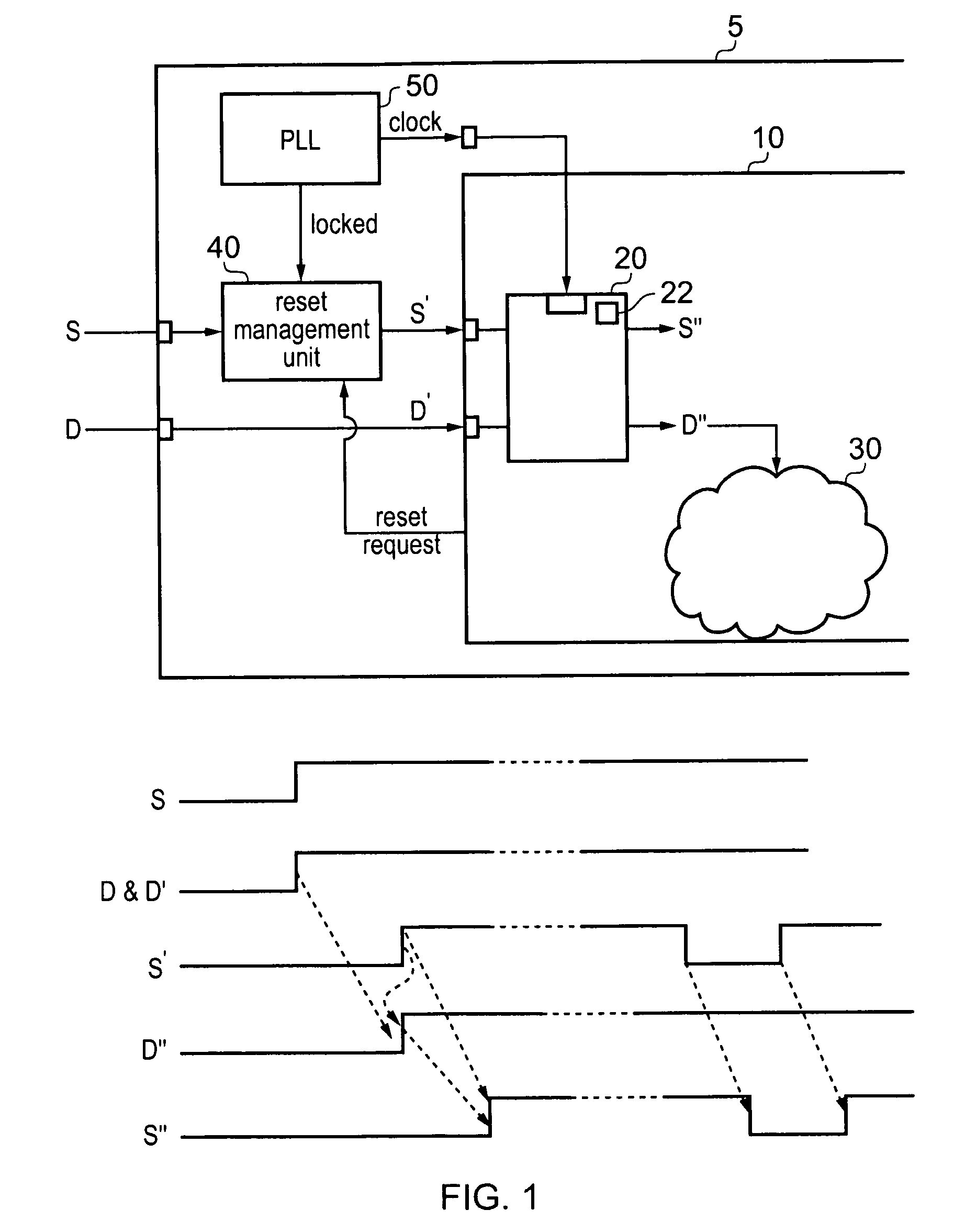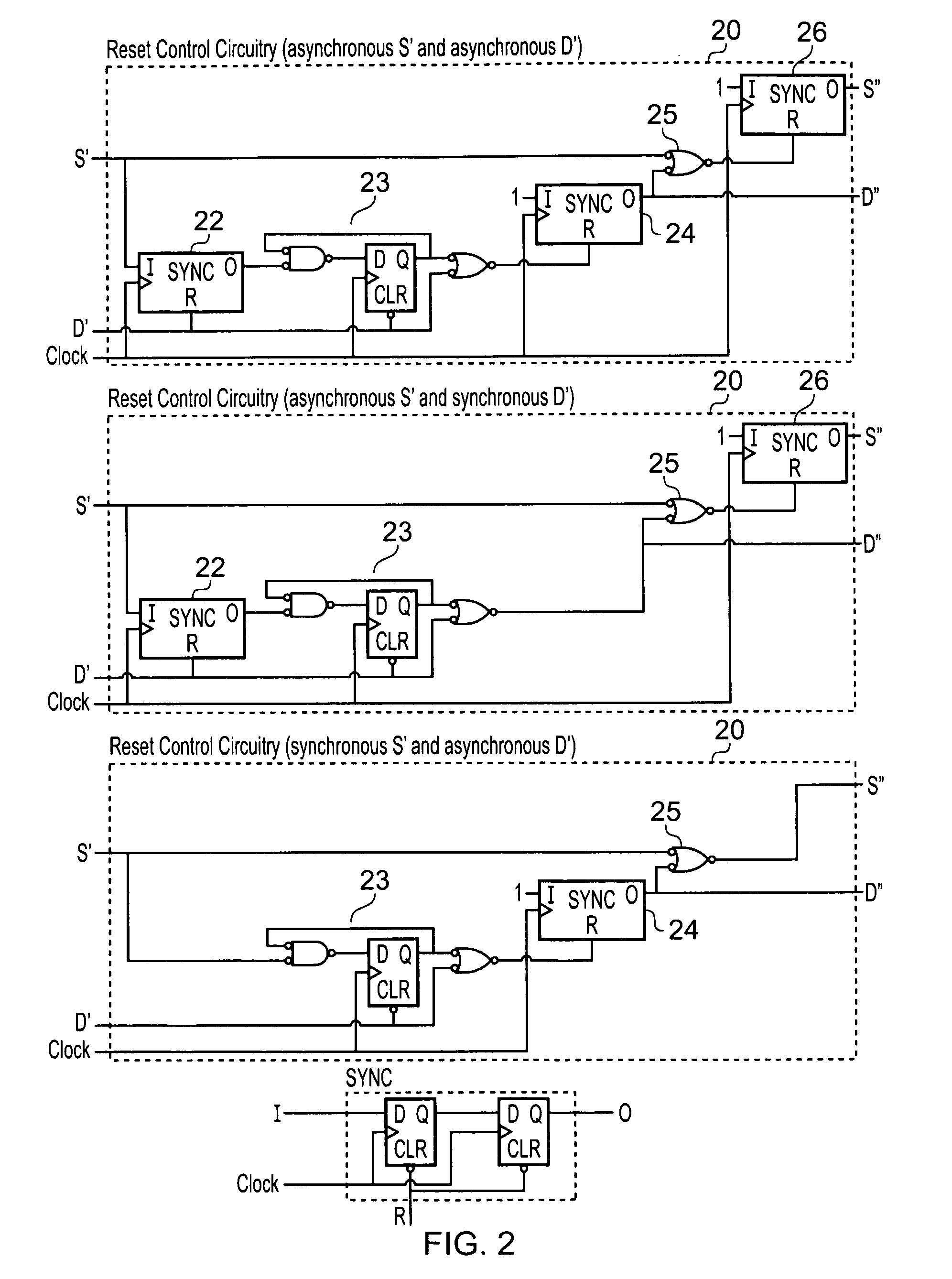Reset synchronisation
a technology of reset synchronisation and synchronisation time, applied in the field of data processing, can solve the problems of system reset reaching the processor that are beyond the control and sight of diagnostic circuitry, and achieve the effect of simple yet effective, and maintaining their independen
- Summary
- Abstract
- Description
- Claims
- Application Information
AI Technical Summary
Benefits of technology
Problems solved by technology
Method used
Image
Examples
Embodiment Construction
[0052]FIG. 1 shows a data processing apparatus 5 having a processor 10, reset control circuitry 20, diagnostic circuitry 30, a reset control management unit 40 and a phase locked loop 50. Data processing apparatus 5 receives a system reset signal S and a diagnostic reset signal D. These are shown as being input from outside of the data processing apparatus. They may, alternatively, be internally generated, for example in response to a power on signal.
[0053]Data processing apparatus 5 comprises reset control management unit 40 which controls the resetting of the system. When reset control management unit 40 detects the deassertion of the reset signal S it does not output the deasserted signal to processor 10 until is detects that the phase locked loop 50 which clocks processor 10 and also reset control circuitry 20 has locked. When it detects this it knows that it is safe for the processor to start operating and thus, it transmits the delayed system reset signal S′ to processor 10. T...
PUM
 Login to View More
Login to View More Abstract
Description
Claims
Application Information
 Login to View More
Login to View More - R&D
- Intellectual Property
- Life Sciences
- Materials
- Tech Scout
- Unparalleled Data Quality
- Higher Quality Content
- 60% Fewer Hallucinations
Browse by: Latest US Patents, China's latest patents, Technical Efficacy Thesaurus, Application Domain, Technology Topic, Popular Technical Reports.
© 2025 PatSnap. All rights reserved.Legal|Privacy policy|Modern Slavery Act Transparency Statement|Sitemap|About US| Contact US: help@patsnap.com



